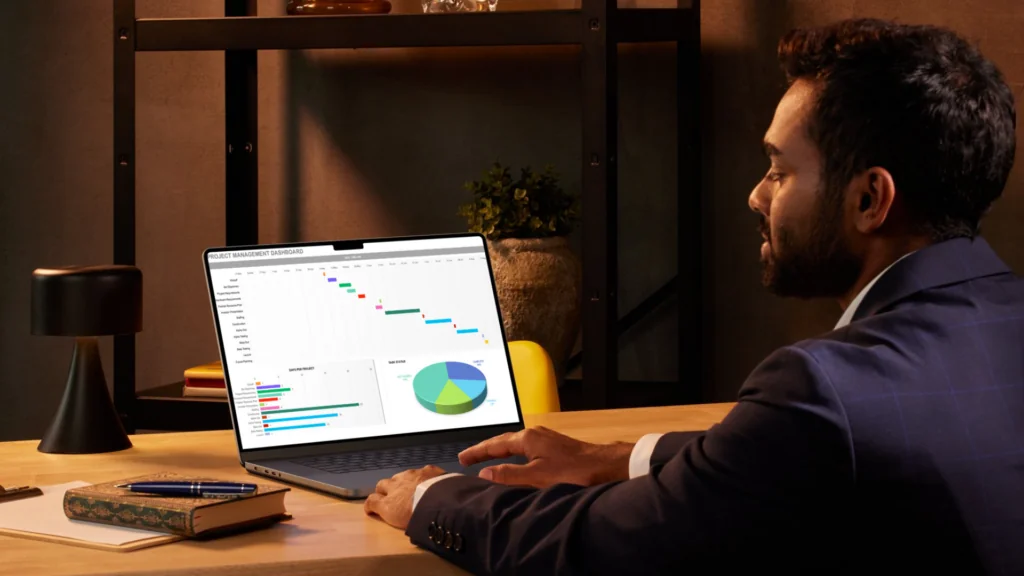What Buy-To-Let Taxes Do I Have To Pay?

Let’s face it, nobody enjoys paying taxes.
They can be confusing, feel like a big chunk out of your hard-earned cash, and sometimes seem never-ending in the UK.
But, if you’re a landlord or a soon-to-be landlord, knowing and following tax rules is important. They affect your profit margins, and getting them wrong could mean hefty fines or even penalties.
We know how dreading taxes might feel.
Fortunately, we’ve done the hard work for you. We’ve researched, simplified, and created a complete guide about buy-to-let taxes in the UK.
What Taxes Do I Need To Pay As A Landlord?
In the UK, you’ll encounter several taxes related to your buy-to-let property. Here’s a quick overview of what we’ll tackle:
- Income Tax on Buy-to-Let Income
- Capital Gains Tax on Buy-to-Let Property
- Stamp Duty Land Tax (SDLT)
- Inheritance tax (IHT)
Income Tax on Buy-to-Let Income
If you own a buy-to-let property, the income you earn from it—whether it’s rent, security deposits, or other payments like fees or utility bills—will be subject to income tax.
Most of the time, this income comes from rent, but any money you receive related to the property counts too.
The good news is, if your total income (including your salary, rental income, and any other earnings) is less than £12,570 for the 2024/25 tax year, you won’t need to pay income tax. That’s because this amount falls within your personal allowance.
But, you must still tell HMRC if your rental income is over £1,000, even if you don’t owe any tax. If your total rental income is over £2,500, you’ll also need to submit a self-assessment tax return.
Here’s how the income tax rates for the 2024/25 tax year work:
| Band | Taxable Income (2024/25) | Tax Rate |
|---|---|---|
| Personal Allowance | Up to £12,570 | 0% |
| Basic rate | £12,571 to £50,270 | 20% |
| Higher rate | £50,271 to £125,140 | 40% |
| Additional rate | Over £125,140 | 45% |
Let’s break this down with an example.
Imagine your total income, including your salary and rental income, is £60,000. The first £12,570 is tax-free, thanks to your personal allowance.
The next £37,700 (from £12,571 to £50,270) is taxed at 20%, which works out to £7,540.
The remaining £9,730 (from £50,271 to £60,000) is taxed at 40%, which adds up to £3,892.
Together, your total income tax bill would be £11,432 yearly, which covers your salary and rental income combined.
Luckily, you can reduce the amount of tax you pay by claiming allowable expenses. These are costs directly related to running your buy-to-let property.
Examples include:
- Letting agent fees
- Legal fees for short lets or lease renewals under 50 years
- Accountant fees
- Repairs and maintenance (but not improvements)
- Building and contents insurance
- Council tax, gas, water, and electricity (if you pay these yourself)
- Ground rent, service charges, and cleaning or gardening services
You can also claim tax relief for replacing furniture or appliances under specific HMRC rules, as long as you’re not upgrading them.
Remember, the tax year runs from 6th April to 5th April the following year. The same rules apply in Scotland, although the tax bands there are slightly different.
Mortgage Tax Relief Option for Buy-to-Let Mortgages
Things have changed recently for buy-to-let mortgage tax relief. Previously, you could deduct your mortgage interest payments directly from your rental income, reducing your tax bill.
Now, the system uses a tax credit based on 20% of your mortgage interest. This means you get a credit worth that amount, regardless of your tax bracket.
For some, this change might mean paying more tax. Here’s why:
If your buy-to-let mortgage has you paying £5,000 in interest annually and you collect £15,000 in rent.
Under the old rules, you’d subtract the £5,000 interest from your £15,000 income, leaving £10,000 taxable. Simple and straightforward.
But, with the new system, you pay tax on the entire £15,000, then apply a £1,000 credit (20% of your interest).
If you’re in a higher tax bracket, this could lead to a heftier tax bill than before.
As a result, some investors are considering owning buy-to-let properties through limited companies.
Limited companies are separate legal entities from you. This structure allows you to claim full tax relief on mortgage interest payments for the company.
The potential tax benefits are making limited companies an increasingly popular option for buy-to-let investments. We’ll delve deeper into this shortly.
Capital Gains Tax on Buy-to-Let Property
Capital gains tax (CGT) is a separate tax from income tax on rental income. It applies to the profit you make when you sell your buy-to-let property.
Here’s a quick look at the current CGT rates for selling property:
| Tax Bracket | CGT Rate on Profit |
|---|---|
| If your total income (including profits) is £50,270 or less | 18% |
| If your total income (including profits) is above £50,270 | 24% |
Profit is the difference between the selling price of the property and the total costs involved in acquiring and selling it. This includes:
- The purchase price (what you originally paid for the property).
- Renovation costs (only significant improvements, not regular maintenance).
- Selling costs (estate agent fees, solicitor fees, etc.).
You can deduct these costs from your profit before calculating the tax.
For 2024/25, you also have a £3,000 tax-free allowance (£6,000 for couples), which reduces the amount of profit you need to pay tax on.
Let’s walk through an example.
Say you sold a buy-to-let property for £250,000, and:
- You bought it 15 years ago for £120,000.
- You spent £2,500 on buying costs (stamp duty + solicitor fees).
- You spent £3,000 on selling costs (estate agent + solicitor fees).
- You’re entitled to a £3,000 tax-free allowance.
Here’s how the maths work out:
| Description | Amount (£) |
|---|---|
| Sales Price | £250,000 |
| Purchase Price | (£120,000) |
| Profit | £130,000 |
| Buying Costs | (£2,500) |
| Selling Costs | (£3,000) |
| Profit before tax allowance | £124,500 |
| CGT Tax Allowance (assuming individuals) | (£3,000) |
| Taxable Gain | £121,500 |
Now, let’s assume your annual income is £35,000. Adding the £121,500 profit to this brings your total income for the year to £156,500.
Here’s how the tax is calculated:
Basic rate tax (18%): Your income allows up to £50,270 to be taxed at the basic rate.
- From your £121,500 profit, £15,270 (the difference between £35,000 and £50,270) is taxed at 18%.
- 18% of £15,270 = £2,748.60.
Higher rate tax (24%):
- The rest of your taxable profit (£121,500 – £15,270 = £106,230) is taxed at the higher rate.
- 24% of £106,230 = £25,495.20.
Total CGT: £2,748.60 (basic rate) + £25,495.20 (higher rate) = £28,243.80.
If the property you sold used to be your main home, you might be able to get Private Residence Relief, which could lower the amount of profit you pay tax on.
If you’ve lost money on other things, like shares or another property, in the same tax year, you can use those losses to reduce your tax bill.
And if you don’t use all your losses, you can save them to lower future gains.
Just make sure to let HMRC know about any losses within four years, so you don’t miss out.s.
Stamp Duty Land Tax (SDLT)
Stamp Duty Land Tax (SDLT), also known as stamp duty, is a tax you pay on buying a property. It applies to buy-to-let properties as well as residential homes.
There’s an additional 5% surcharge on top of the standard SDLT rates for buy-to-let purchases. This surcharge aims to encourage investment in primary residences.
Here’s a quick overview of SDLT rates in England and Northern Ireland (valid until 31 March 2025):
| Property Price (£) | SDLT Rate (Buy-to-Let) |
|---|---|
| £0 – £40,000* | 0% |
| £40,001 – £250,000 | 5% |
| £250,001 – £925,000 | 10% |
| £925,001 – £1.5m | 15% |
| Over 1.5m | 17% |
From 1 April 2025, the nil-rate band for standard residential purchases will return to £125,000 (£300,000 for first-time buyers).
| Property Price (£) | SDLT Rate (Buy-to-Let) |
|---|---|
| £0 – £40,000* | 0% |
| Up to £125,000 | 5% |
| £125,001 to £250,000 | 7% |
| £250,001 to £925,000 | 10% |
| £925,001 to £1.5 million | 15% |
| Over £1.5 million | 17% |
It’s important to note that Scotland and Wales have their property purchase taxes with different names and rates. Be sure to research the specific SDLT equivalent in your chosen location.
Inheritance tax (IHT)
Inheritance tax (IHT) is a tax you pay on the value of your estate when you die. This includes any buy-to-let properties you own.
The current inheritance tax threshold for individuals is £325,000, and it’s £650,000 for married couples or civil partnerships who leave everything to each other.
If your estate, with your buy-to-let properties, exceeds these thresholds, your loved ones could face a 40% tax on the excess. That’s a big chunk.
These properties can significantly bump up your estate’s value, potentially leading to a higher tax bill for your beneficiaries.
Inheritance tax planning is crucial for buy-to-let investors. Consulting a tax advisor or accountant can help you explore strategies to minimise your taxes related to buy-to-let properties.
How Do I Pay My Buy-To-Let Taxes?
To pay your buy-to-let taxes, you usually need to report your income and gains to HMRC using a self-assessment tax return each year. After that, you pay any tax owed according to their calculations.
Here’s a quick guide on the key dates for different buy-to-let taxes:
- Income Tax on Buy-to-Let Income. File your Self Assessment by October 31st (paper) or January 31st (online) following the tax year’s end in April. Pay your tax by January 31st.
- Capital Gains Tax on Buy-to-Let Property. Report the sale and pay the tax within 60 days of the property sale.
- Stamp Duty Land Tax (SDLT). Pay SDLT within 14 days of completing the property purchase.
- Inheritance Tax (IHT). The estate pays IHT within 6 months of the person’s passing.
Make sure to keep these dates in mind to stay on top of your buy-to-let taxes and avoid penalties.
Should You Form a Limited Company?
Limited companies can be an attractive option for buy-to-let investors due to potential tax advantages. But, they come with drawbacks that need careful consideration.
One key benefit is full tax relief on mortgage interest payments. Unlike owning a buy-to-let property personally, a limited company can claim the entire amount as a business expense, reducing its taxable profits.
But, limited companies often face higher mortgage interest rates compared to individual buy-to-let mortgages. This can eat into the potential tax savings.
Extracting profits from a limited company also presents complexities. Taking dividends incurs personal tax on the income you receive.
Alternatively, you can take a salary, but that means paying National Insurance contributions.
There’s another disadvantage to consider. Limited companies don’t benefit from the individual capital gains tax allowance when you sell a property. This means you might pay more tax on any profit you make.
So, should you form a limited company for your buy-to-let investments? The answer depends on your circumstances.
Factors like your tax bracket, investment goals, and plans all play a role.
Seeking professional financial advice is crucial. A financial advisor can help you understand the tax implications of both personal ownership and limited companies.
They can then guide you towards the most suitable ownership structure for your specific situation.
Key Takeaways
- As a landlord, you’ll need to pay income tax on rental earnings, capital gains tax (CGT) if you sell the property, stamp duty land tax (SDLT) when buying a buy-to-let property, and potentially inheritance tax (IHT) if your estate exceeds £325,000 (£650,000 for couples).
- Income tax is paid annually through self-assessment, while CGT must be reported and paid within 60 days of selling a property. SDLT is due 14 days after completing a property purchase, and IHT is handled within 6 months after someone passes away.
- Forming a limited company for your buy-to-let business has advantages like full tax relief on mortgage interest, but comes with drawbacks like higher mortgage rates and losing personal CGT allowances. Extracting profits through dividends or salary also involves additional taxes.
The Bottom Line
Buy-to-let taxes can be complex, and tax regulations can change. It’s vital to stay informed and plan effectively to maximise your investment returns.
This guide explored key tax considerations, including income tax, mortgage interest relief, capital gains tax, and inheritance tax. Remember, the best ownership structure – personal or limited company – depends on your circumstances.
While we can’t connect you with tax advisors directly, we can help you connect with experienced brokers.
They can guide you through the decision of forming a limited company and choosing the best financing options for your buy-to-let goals.
Simply fill out this form and we’ll arrange a free, no obligation consultation with a qualified mortgage broker.
Get Matched With Your Dream Mortgage Advisor...

Frequently asked questions
Can I deduct solicitors fees for buy-to-let taxes?
Yes. Unlike the upfront cost of buying the property, solicitor fees are tax-deductible for buy-to-let properties. This means you can reduce your tax bill by claiming them against your rental income.
Can I deduct rent from taxes in the UK?
As a landlord, you can’t deduct the rent you receive from your taxes. However, you can deduct allowable expenses related to renting out your property, such as maintenance and service fees, from your rental income before you calculate your tax liability.
How long do you have to live in a property to avoid capital gains tax in the UK?
To fully avoid Capital Gains Tax on the sale of a property, it must have been your only or main residence for the entire period you owned it. If you’ve lived in it for part of the ownership period, you may get partial relief.
Do tenants pay property taxes in the UK?
No, tenants do not pay property taxes. However, they are typically responsible for Council Tax. As a landlord, you’re responsible for paying Income Tax on rental income and Capital Gains Tax when selling a property.
Is rental income subject to VAT UK?
In the UK, rental income from residential property is exempt from VAT. For buy-to-let properties in the UK, the rental income you receive as a landlord is exempt from VAT. You won’t need to charge VAT to your tenants or pay VAT on this income to HMRC.




